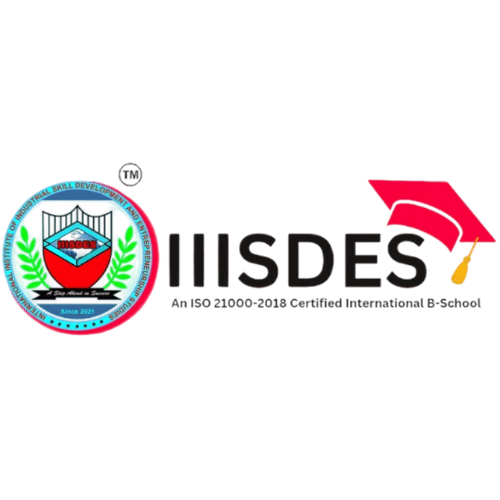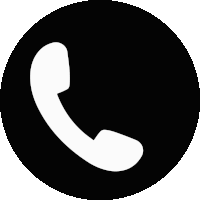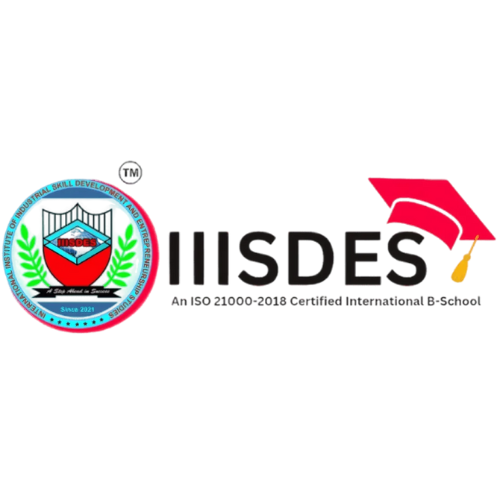
These days, almost everything we do connects to online experiences, searching for information, shopping, viewing videos, scrolling through social media, and everything else. And companies know that, which is precisely the reason digital marketing has become one of the most powerful methods of engaging with people.
So digital marketing: what is it, and why is it important to new marketers? In simplest terms, it's leveraging online channels - search engines from websites, social media, email, ads, etc. - to target your audience and encourage them to buy your product(s) or services. Digital marketing versus traditional marketing. Traditional marketing channels can include TV, newspapers, or billboards, while digital marketing gives a direct way to engage with leads and prospects faster, more directly, and measurably.
This beginner’s guide to digital marketing will cover what it is and how it works—suitably in an easy-to-understand manner. The objective is for you to know what this is about and how it works, what digital marketing channels are involved, and why it will be valuable for you to learn this skill for new marketing job opportunities, potential freelancing options, and starting an online business opportunities in 2025 and in the years beyond that.
The Importance of Digital Marketing in Today's World
How people find and research products, as well as buy products has changed dramatically. Today, customers are online first, continually doing things like searching on Google, scrolling through Instagram, watching product reviews on YouTube, and purchasing directly from social media platforms. This pivot means that digital marketing is no longer just a choice but a requirement for anyone who wants to stay relevant.
Here is why digital marketing is so extremely pertinent today:
- Immense presence online: Billions of people are on the internet each day. Businesses cannot go without connecting with this global digital audience.
- Cost effective marketing: Digital campaigns will almost always be a fraction of the cost of traditional television, print advertising, or outdoor advertising, and, therefore, affordable to anyone, including start up companies and freelancers.
- Targeting: With digital tools, instead of sending your message to everybody, you can target the people most likely to buy from you.
- Instant Results: No other forms of marketing provide the instant feedback you will receive from digital platforms, whether that’s traffic to your website, people engaging with a post on social media, or who clicked through from an ad.
- Adapting & Growing: You can adapt strategies quickly, especially in fast-moving markets, enabling businesses to remain competitive.
How Digital Marketing is Different from Traditional Marketing
Marketing has always involved engaging with the correct audience at the right moment. Today, the difference is in where that audience is investing its time. Traditional marketing uses offline formats (print ads, billboards, TV, and radio) while digital marketing uses online formats (social media, search engines, and websites).
Here are two differences:
Reach & Access
In traditional marketing, the reach is limited to a local or regional audience. Digital marketing has a global reach with a capacity to reach specific audiences or interests.
Cost
With traditional marketing, campaigns run on TV and in print can be expensive and require large budgets. Digital marketing offers a variety of affordable options available for all budgets from free social media posts to low-cost ad placement.
Engagement
Traditional Marketing: It has a one-way communication model; an organization talks, but a customer has no opportunity to respond. Digital Marketing: It has a two-way communication model; customers can like, comment, share, and engage in real-time.
Success Measurement
Traditional Marketing: It is often difficult to measure exact results—impact is built into estimations.
Digital Marketing: Constant analytics provide accurate measurement of views, clicks, and conversions.
Flexibility
Traditional Marketing: Once the material is published, it is difficult or impossible to change.
Digital Marketing: Campaigns can be modified immediately due to results.
In layman's terms, traditional marketing generates awareness at a high level, while digital marketing is the host of more personalized, measurable, and value-based approaches to finding and turning the right audience.
Major Channels of Digital Marketing
Digital marketing is not a single tactic—it is a combination of several channels that work together to reach audiences and produce outcomes. Here are the key channels every beginner needs to know:
1. SEO (Search Engine Optimization)
SEO is the process of improving a website to rank higher in search engines like Google. When executed correctly, SEO brings visitors who are already searching for products or services like yours.
- Focuses on keywords, website speed and quality of content.
- Brings organic (free) traffic over time.
- Key to long-term visibility and brand credibility.
2. Social Media Marketing
This refers to marketing your brand from your own business page as well as being engaged in all marketplaces (Instagram, Facebook, LinkedIn, TikTok, etc.) Social media allows businesses to communicate directly with their audience.
- Build awareness, awareness and engagement.
- Can run targeted ads.
- Creates a community around your brand.
3. Content Marketing
Content is key to digital marketing. Blogs, videos, podcasts, and infographics all provide educational value, entertainment value, or are simply meant to attract customers.
- Helps establish authority and trust.
- Provides traffic from many sources.
- Works best when combined with SEO and social.
4. Email Marketing
Email is one of the oldest channels in marketing, but it is still highly effective. Email marketing is about building relationships through personalized messages.
- Email marketing is used for newsletters, offers, and updates.
- Cost effective and goes directly to your audience's inbox.
- Email can also be excellent for empowering leads to paying customers.
5. Paid Media (PPC)
Pay-Per-Click or PPC is when you pay for advertisements placed on Google, Facebook, Instagram, etc. You are charged only when someone clicks on your ad.
- It allows for immediate traffic and results.
- The targeting options can be narrowed down by age, interests, or location.
- Additionally, it works best when leveraging organic strategies with the same audience.
Today's Digital Marketing has been disrupted by the Effects of AI
Digital marketing as we know it has been disrupted by Artificial Intelligence (AI). It allows marketers to do in a matter of minutes something that once took hours of manual effort. For marketers, AI can assist them in analyzing data, developing content, and working faster, smarter, and more efficiently.
This is how AI is changing digital marketing today:
- More Intelligent Data Analysis
AI can analyze the vast amounts of data collected from customers and produce real insights. This aids brands in leveraging better insight into their customers' behavior, preferences, and purchasing tendencies.
- Brand Marketing
Through AI, brands can start to send personalized offers, product recommendations, or targeted emails based on the customers' interests. This supports more personal marketing which is more meaningful.
- Content Creation
AI tools like ChatGPT, Jasper, and Writesonic can produce blog posts, social media captions, and even ad copy in nanoseconds, allowing marketers to save time.
- Chatbots & Customer Service
AI-powered chatbots are designed to provide customer service 24 hours a day, 7 days a week by providing immediate answers to customer questions, which enhances the overall user experience.
- Ad Optimization
AI allows Google Ads and Facebook Ads to help optimize campaigns on auto-pilot and spend your advertising dollars in the best places to maximize your results.
Future of Digital Marketing in 2025 and Beyond
The digital marketing landscape is changing at an incredibly fast pace, and technology, personalisation, and the customer experience will unquestionably shape the future of marketing. In 2025 and beyond, digital marketing will be even more data driven, AI-driven, and customer-focused than it is today.
Key trends to watch for:
- AI is Everywhere: It does not matter if it is content creation or ad optimisation, AI will continue to automate and create efficiencies in how marketers go about their jobs.
- Voice & Visual Searches: Digital assistants, such as Alexa, Siri and Google Lens will create entirely new use-cases, for how people discover things.
- Video-First Marketing: Short-form videos, as examples, and live polling will change how brands communicate.
- Hyper-Personalisation: Marketing will become less about a “one-size-fits-all” approach, to setting expectations for every user.
- Ethical & Transparent Marketing: As data privacy builds more concern, trust and authenticity will be more effective marketing tools.
It is clear the future belongs to those who can balance creativity with technology; making Digital Marketing an exciting career and business opportunity.
Getting Started: Easy Steps for Newbies
Digital marketing can feel confusing especially if you are new to it. It doesn’t have to be a big deal. With the right mindset and guidance, you’ll be able to actually begin your way to creating real skills quickly. Here’s a simple guide to get beginners on their way:
- Learning Out Basics – Learning the basic ideas of SEO, social media, content, and email marketing.
- Choose One Channel to Start – Focus on one segment like Instagram marketing, SEO, or paid ads before branching out to new segments.
- Take Advantage of Free Tools to Practice – Utilize free tools that you'll come across, like Canva and ChatGPT. All of these are good to help you practice, and there are a number of free applications like Google Analytics to help you learn, with experience, what data means.
- Work on Small Projects – Consider starting a blog, or growing a small social media page; you could also just run a simple ad campaign.
- Keep Learning - Keep up-to-date with digital marketing. It's constantly changing, and the only way to plan is to keep learning through either blogs or videos, or even AI tools.
- Receive Expert Guidance – The quickest way to improve is receiving training from a professional who has a lot of good organization and training to grow your expertise.
At IIISDES, we focus on teaching Digital Marketing & AI Tools with applied, hands-on training that caters to students, freelancers, and business owners. If you are committed to growing your career or expanding your business with digital skills, please check out our programs here: Learn Digital Marketing with IIISDES.
With a proper start, digital marketing can create pathways to employment, freelancing income, and business growth; all while making your career future proof.





